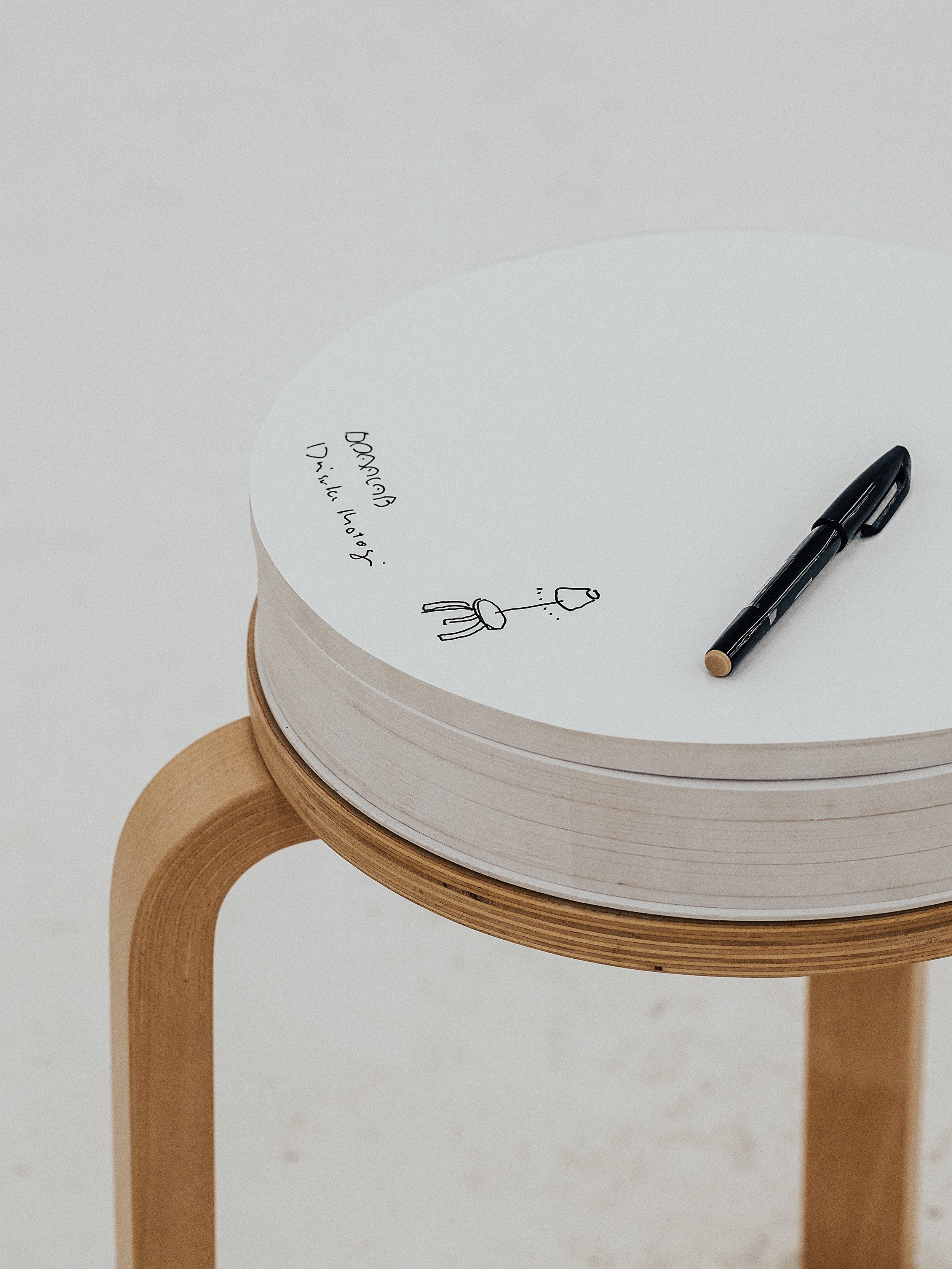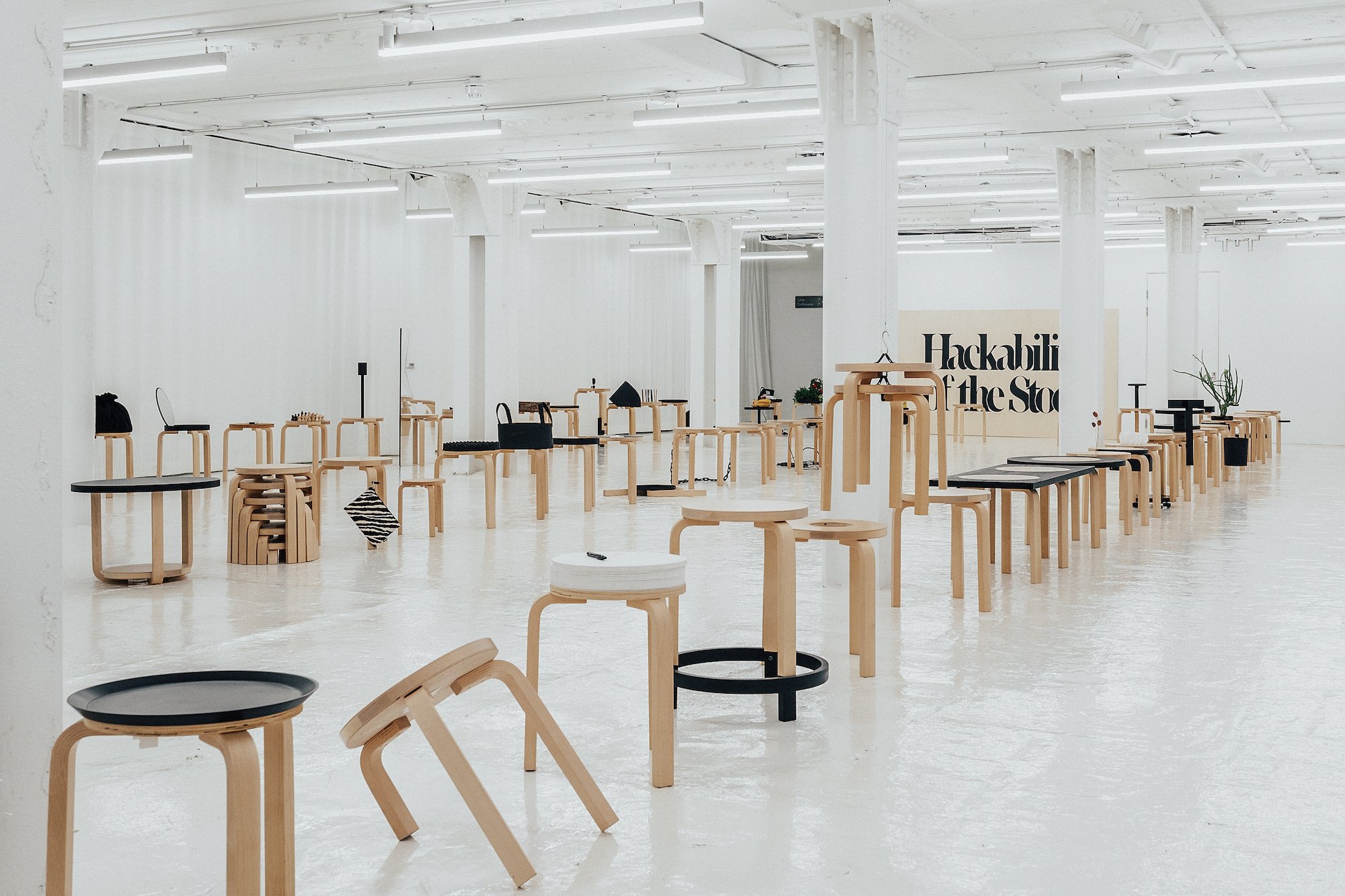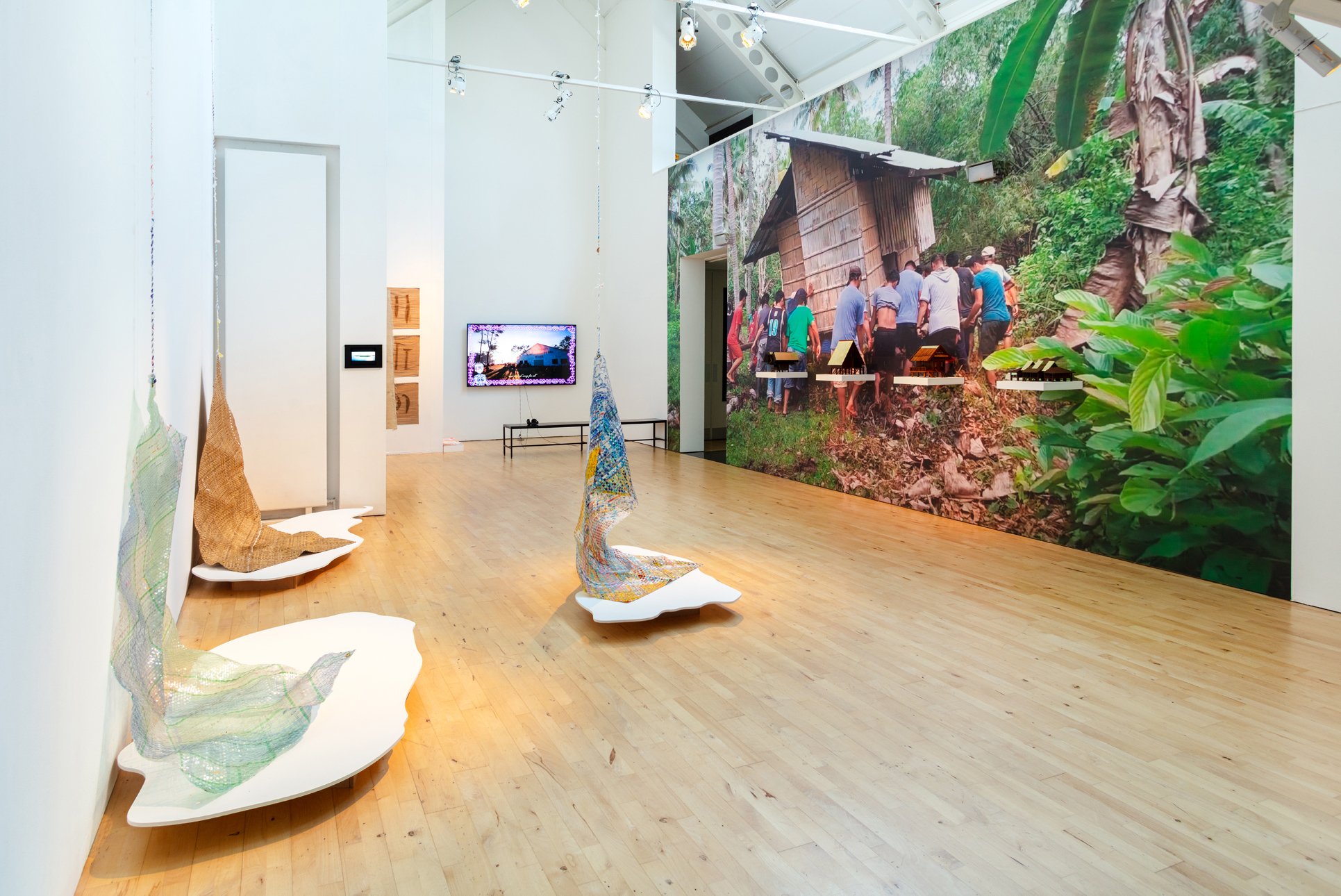LDF Diaries 2023: Day Two
A hacked Artek Stool 60, created by Daisuke Motogi (image: Taran Wilkhu).
Disegno’s roundup of our second day at the 2023 London Design Festival (LDF) is now live: read on for our impressions of new work and projects from Artek, Morag Myerscough and Stanley Picker Gallery.
Hackability of the Stool by Daisuke Motogi (image: Taran Wilkhu).
Stool is a stool is a stool is a stool
Creating public installations to promote a piece of furniture is challenging. Go too abstract, arty or obtuse, and the entire thing descends into absurdity (all this to sell a chair?); too plain and boredom inevitably sets in. Hats off to Finnish brand Artek, then, whose Hackability of the Stool offers a masterclass in straddling the divide. Created by architect Daisuke Motogi of DDAA, the exhibition offers a series of 100 different versions of Alvar Aalto’s classic Stool 60 (1933), which Motogi and his team have hacked and modded into bizarre and wonderful riffs. First developed through community workshops hosted in Tokyo that sought to consider different functions for seating, the project has subsequently blossomed into an exercise in creative repetition, producing takes on the Stool 60 that are all still recognisable as the original, but also individually eccentric, delightful, and thought-provoking. There are stools hacked into tissue dispensers; bins, speakers and xylophones; stools for flowers, cats, dogs and nomad workers (with an in-built power supply); and stools transformed into ironing boards, drinks caddies, spirit levels and camera tripods. The different iterations are grouped according to the rough category into which their hack falls – function, subject, shape, stacking, what two stools can do, thinking from materials, and midnight whims (the properly mad ones) – raising interesting questions around how we can challenge and reframe familiar typologies. To support this, the exhibition also contains drawings of a further 300 suggested hacks, as well as extensive documentation of Motogi’s process. But the exhibition works just as well as a gallery of visual one-liners: a parade of Stool 60s, each barmier than the last. It is a witty, fascinating and memorable study of a single design, which never pretends to be anything more than a celebration of the versatility of its base design. Furniture manufacturers take note – this is how you do it.
Hackability of the Stool: Vitra, 32 Rivington Street, EC2A 3LX
A World of Islands: On Palms, Storms & Coconuts by Ligaya Salazar at Stanley Picker Gallery (image: Ellie Laycock).
What Does a Design Festival Do?
In the hundreds of events happening across London throughout LDF, the ones that tend to grab the most attention are those that feature edgy new designers who have broken into the scene with something a little offbeat or, at the other end of the spectrum, the big installations by big brands with big budgets and who commission big names with big pull power. In addition to these more obvious (but nevertheless often interesting) offerings, it is worth taking a moment to note the less flashy events that occur throughout the week, when designers, curators, critics, press and thinkers all gather together in one city. On Monday September 19, the Stanley Picker Gallery (SPG), Onkar Kular, and the IASPIS International Programme for Visual and Applied Arts in Stockholm hosted the second iteration of their forum titled ‘What Does a Design Residency Do?’. Both of these organisations have run highly regarded residency programmes for a number of years and, fittingly, this year’s one-day forum took place alongside the SGP’s current exhibition A World of Islands: On Palms, Storms & Coconuts, curated by former fellow and resident Ligaya Salazar. The event invited anyone who has ever been a resident, as well as those who host residencies, to come together and share their experiences of being involved in one or more of the many types of residencies that exist. While residencies are frequently pivotal moments in the careers of designers – offering them space, funding, mentorship, or a combination of the three to produce new research and work – they often operate in silos to other residencies, instead being linked to the museums, governing bodies, institutions, designers or individuals who fund them. Bringing together stakeholders with skin in the game, the forum began to unpick the mechanisms and models of residencies and offered an opportunity to interrogate topics that, perhaps, have historically not received the attention and rigour they merit. ‘What Does a Design Residency Do?’ is a broad and worthy inquiry, encompassing questions of funding streams, accountability, accessibility, exclusivity, differing expectations of funders and residents, and more. In using a design festival as an occasion to foster new networks and development within the industry, the forum also makes us wonder: what more could a design festival do?
Stanley Picker Gallery: Kingston University Nursery, 3 Portland Rd, Kingston upon Thames KT1 2SG
Nice to Meet You Again by Morag Myerscough and Mini (image: courtesy of LDF)
Take the Mini and run
Nice to Meet You Again, an installation by designer Morag Myerscough for Mini, is something of a puzzle. On the one hand, it is colourful, giddy and delightful, in the way that all Myerscough’s work is, taking form as a technicolour representation of plywood plants and flowers that have been transformed into a series of towering indoor pavilions. On the other hand, it’s also something of an advert for Mini’s electric cars, although it’s not exactly clear how, beyond Myerscough having worked with the brand’s colour palettes: because nature… likes electric cars? This ties into one of the central tensions of any design festival. Brands are drawn to these events as opportunities to market themselves and their products to broad publics (Nice to Meet You Again is billed as a means of “bringing MINI’s ‘Big Love’ attitude to life”), and commission designers on the basis that their creative output is frequently alluring, with an easy charm that rubs off on its corporate patron. In this respect, Nice to Meet You Again is something akin to the world’s best car showroom, with Myerscough’s work creating a spectacular backdrop for the display cars parked amidst her structures. Negatively, it could be suggested that there is an element of greenwashing present in the endeavour (electric cars are not without their environmental impacts) and there is also, perhaps, a sense of regret that Myerscough’s talents are being applied to a project that has this kind of promotional element. Conversely, brand partnerships are an important source of income for designers, and it is something to be celebrated that Mini appears to have given Myerscough free reign to create something beautiful, and whose relationship to its own product seems secondary to its aspirations as an installation (when Disegno visited the space, children were clearly thrilled to be running in and out of Myerscough’s structures – surely a sign of success?). It is a familiar debate, and one that is unlikely to go away any time soon. Design festivals put the industry’s best foot forward, serving to celebrate and champion the creative output of practitioners; dig a little deeper, however, and they also highlight the mechanisms through which this creativity is funded and funnelled.
Nice to Meet You Again: Shoreditch Electric Light Station, 6 Hoxton Square, N1 6NU




